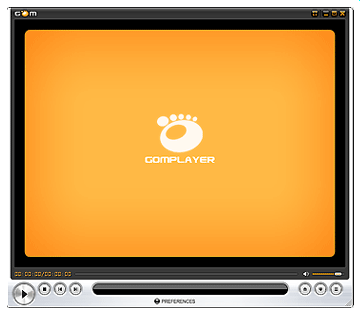And, While We Are At It… What About DVD Playback in Ubuntu?
Our friend, and Linux colleague, Darkmoon at LUX.ET.UMBRA, has a tip on getting those pesky DVDs to play in Ubuntu Linux…
Gotta love THAT!
Dr. Bill | The Computer Curmudgeon
Join Dr. Bill as he examines the wild and wacky world of the web, computers, and all things geeky! Hot Tech Tips, Tech News, and Geek Culture are examined… with plenty of good humor as well!
Our friend, and Linux colleague, Darkmoon at LUX.ET.UMBRA, has a tip on getting those pesky DVDs to play in Ubuntu Linux…
Gotta love THAT!
This is a great tutorial to get WPA wireless security to work with your Ubuntu Linux system with a wireless card. WEP is lousy security… so you REALLY need to use WPA! But, “out of the box” WPA isn’t available for your wireless card… so how do you do it?
Enable WPA Wireless access point in Ubuntu
The tutorial has nice screenshots and details on setting up WPA. Go for it!
Jamie Hyneman recommends Ubuntu Linux over Windows Vista! So do I! This article in Popular Mechanics magazine by Jamie Hyneman, of the MythBusters TV show on the Discovery Channel is all about his personal “Tech Headaches—and How to Fix Them.” One section (at the link below) describes his frustration with “bloatware!”
Tech Headaches—and How to Fix Them
“Computer operating systems loaded with stuff I don’t want and will never use. In the tech world this phenomenon is known as ‘software bloat’ or ‘feature bloat.’ It’s a well-documented problem and a frequent complaint about Windows OSs—Vista in particular. In addition to being buggy, the extra features tend to bog down your system by demanding more processing power and memory. Computer-makers: Don’t load up operating systems with features and then make us sweat to figure out how to get rid of the fat. Most features can be set up as options. Why not start with a computer loaded with basic stuff that works 100 percent of the time? Then, give us the option of adding the bells and whistles. There’s another solution available to consumers: Switch to a Linux-based OS such as Ubuntu. Since most Linux OSs are free, there’s no business reason to bloat up the system with feature frills. And high-tech companies—stop messing with us on your treadmill of upgrades while making the old stuff obsolete. It may be that any software company that didn’t routinely upgrade its product would go out of business. But what if the rest of the world worked this way? Oh, I lost a sock. I need to get a whole new wardrobe because the replacement sock is version 2.0.1, and the stores now only sell version 2.0.3.”
Today is he 50th anniversary of the Lego brick… and you know how Google likes to change it’s logo on the website to “honor” such things… well here you go!

Kinda cool! I thought it looked pretty neat, so I am sharing it. If you happen to go to Google during the day today… and who doesn’t use Google? Check it out!
Vista is bloated, it is ugly, and it’s mother dresses it funny! OK, OK, I am being silly… but there is a lot of “buzz” about a new, free program that DOES strip the bloat out of Vista, called vLite! The idea is to take all the Vista “junkware” out and strip it is it’s bare essentials.
Software Tool Strips Windows Vista To Bare Bones
“A free software tool that promises to strip down the Windows Vista operating system — which even some Microsoft (NSDQ: MSFT) officials have called “bloated” — to a minimalist state is attracting big interest on the Internet. vLite, created by developer Dino Nuhagic, automatically removes a number of non-essential Windows Vista components in order to pare the OS’s heavy footprint by half or more. vLite allows users to preselect numerous Vista features for automatic removal prior to installing the OS on their personal computers. Among them: Windows Media Player, Windows Photo Viewer, MSN Installer, Wallpapers, SlideShow, Windows Mail and other utilities. ‘It’s not just about hard disk space. There is also an increase in OS responsiveness and you don’t have to tolerate all kinds of things you don’t use,’ said Nuhagic, in an e-mail to InformationWeek explaining why he launched the project. vLite, however, isn’t for the technically timid. The software warns that the changes it imposes on Vista are ‘permanent, so be sure in your choice.’ Nuhagic said he doesn’t know exactly how many downloads vLite has seen — but a forum that asks users to submit suggestions for the next version has drawn almost 50,000 views. The emergence of tools like vLite reflect the frustrations voiced by many computer users over Vista’s bulk and resource requirements.”
Are you watching more video off the web? Spending “quality time” with YouTube? Or, are you just doing more “mindless surfing?” Apparently, a lot of you are!
With writers still striking, is the Web substituting for TV?
“According to one recent study, people are spending more time on the Internet than usual during the Hollywood TV writers’ strike. According to another survey, more than half of all the people on the Web have watched online videos. The Internet is displaying more and more of the ramifications of a TV replacement, if results of a couple of major surveys published this week are a good indication. In one of those reports, MindShare found that, due to repeat programming on TV, nearly half of respondents are spending more time than usual online during the Hollywood writers’ strike. Although this particular study didn’t delve into what the dissatisfied TV viewers do when they go online, it’s probably a good bet that many of them are viewing videos — as opposed to reading text-based Web pages — online. Another recent study did focus on what people when they go online. Like the MindShare study, the study by Burst Media was conducted as an online survey. Burst questioned people 18 years of age or older. According to Burst’s results, 72% of respondents have viewed online content, a number that’s up — although only slightly — over the 69.5% who gave the same answer in a similar study done by the company the year before. Those samples, however, were taken, during a time long before the Hollywood writers’ strike. In this year’s survey by Burst, the majority of the respondents in each age bracket said they’ve watched video content online, including 58.6% of those 65 years of age and older. Moreover, across all age segments, 58.8% viewed video on the Internet at least once a week. But online video viewing turned out to be most frequent of all among 18-to-24-year-old men, 33.7% of whom said they watch some type of online video content at least once a day. What types of video content is popular on the Web? Not that surprisingly, it sort of mirrors the kinds of materials that people watch on television. Across all age groups, news clips turned out to be the number one choice, followed by music videos; comedy videos; movie trailers/advertising; TV show video/clips; entertainment news; sports/sports news; and cooking videos.”

So… first off, I LOVE the VLC Player, and I am still using that… but if there was a second choice for me, it would be this one… the GOM Player! You may say, that isn’t exactly a rousing recommendation… well, it is and isn’t… players are personal preference, and I just like VLC Player’s features and such… but this one is really nice too and you may find it more user friendly!
“GOM Player supports most popular codecs (AVI, DAT, MPEG, DivX plus many more) with its own embedded codec system that you won’t have to look for appropriate codecs everytime you can’t play a certain video format. For those codecs that require a license that cannot be distributed, GOM will automatically lead you to an open-source codec web-site. Watch video files while you are downloading them! GOM has a registered patent for playing broken AVI files and files that are still being downloaded. So try one of your broken AVI files or one that you are downloading right now. You’ll find it amazing! GOM supports a lot of advanced features for advanced users. You can customize the player by creating your own skin, setting toggle keys, VMR modes, detailed resolution among others. It also provides features such as an overlay mixer, real-time index rebuilding for AVI files, unicode support, key frame based RW/FF and many more!”
Podcast: Play in new window | Download (Duration: 28:22 — 9.7MB) | Embed
Subscribe: RSS
Dr. Bill Podcast – 121 – (01/26/08)
Click on the “Streaming MP3” badge below to play Streaming Audio of this Podcast.

Download MP3
(Right-Click on the Link Above and Choose “Save” to Save the MP3 file locally on your PC.)
Click on the “Streaming Ogg” badge below to play Streaming Ogg Vorbis Format Audio of the Podcast.

Download Ogg Vorbis Format
(Right-Click on the Link Above and Choose “Save” to Save the Ogg Vorbis file locally on your PC.)
New Geek Culture from The Richter Scales… some tech news, and the Geek Software of the Week: WinVI!
 Very neat! RawVoice Media, Inc., the folks that are behind the Techpodcast Network, and the Blubrry podcast community, have started a new service… called PodcastFAQ. Check it out… it is an awesome collection of info on podcasting and podcasting technology and promotion!
Very neat! RawVoice Media, Inc., the folks that are behind the Techpodcast Network, and the Blubrry podcast community, have started a new service… called PodcastFAQ. Check it out… it is an awesome collection of info on podcasting and podcasting technology and promotion!
Here’s what they say on the Home Page:
“Welcome to podcastFAQ.com, a website committed to providing everything you need to know about podcasting. This site aims to contain the most up-to-date information for podcast creators, consumers and businesses. The content on podcastFAQ.com is intended to be easy to find, to the point, and without clutter.
Whether you’re a new or seasoned podcaster, an avid listener/viewer, or just someone interested in podcasts, we hope to have something for you. Go ahead; it’s easy. Use the navigation on the left to explore the breadth of the site.
podcastFAQ.com is the result of a bunch of us podcasters – who are also the founders of RawVoice Inc. – going to meet-ups, podcamps and expos preaching our love, passion and knowledge of podcasting. It dawned on us that we had all this information about podcasting, but nowhere to put it.”
Digg is changing the way it elevates popularity of it’s entries. This is proving quite controversial!
Digg overhauls its definition of ‘popular’ articles
“The social networking and news sharing site has always kept the precise details of its popularity algorithms a secret. But today, Digg did announce the nature of a change which could alter the entire meaning and purpose of the site. Up to now, the way any online news publisher got one of its articles publicized through the Digg social service is by hoping enough people were interested in it to vote in favor of moving it up the Digg scale — of giving it enough ‘Diggs.’ Starting today, however, that changes: The secret to a heavy publicity on the Digg service won’t be having enough people, but having the right kind of people. And how Digg determines the right kind has already become a subject of controversy among its community. This morning, Digg founder and chief architect Kevin Rose unveiled the key to its new popularity algorithm. Described as involving ‘diversity,’ it apparently involves an unusual way of determining whether recommending members are diverse enough from one another: by ascertaining just how much they don’t get along with one another. ‘One of the keys to getting a story promoted is diversity in Digging activity,’ reads a statement Rose posted to his corporate blog yesterday evening, whose text was also added to the site’s FAQ. ‘When the algorithm gets the diversity it needs, it will promote a story from the Upcoming section to the home page. This way, the system knows a large variety of people will be into the story.'”